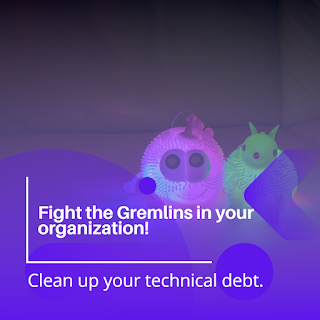 |
| Happy New Year! |
Nothing is going to be easy. –
The year is a textbook example of the insecure nature of the modern global economy. I was fired from my position as a director of delivery and then went into the world of consulting. The social contract where you are loyal to an organization and, in exchange, they are dedicated to you is gone. Now each person must build a brand and skills to convince employers to hire you to generate value for them. It is exhausting and aggravating because it forces you to prioritize your career for survival reasons instead of family and community. It also grinds down the self-worth of everyone because security and status depend on maintaining valuable skills for the employment market.
Career, family, and community are never easy, but it will become increasingly difficult to balance these forces with this present situation. It is no wonder birth rates are declining in the United States.
Ending Humiliation at the Office. –
The year 2021 features an open insurrection against a freely elected president and the prolonged effects of the COVID-19 pandemic. Both of these stories are important, but in my mind, the big story is the “Great Resignation.” The job market is hot, and the upheaval of the last two years has made people reconsider priorities. I also suspect that many professionals working from home realize how awful and humiliating it is to work in an office. Petty leadership, microaggressions, and lack of advancement are finally coming to a head, and it is natural for people to tell organizations to stuff it. I joined the agile reformation because I knew that this situation would not be sustainable. If your organization wants to survive, it pays to help people find dignity, flexibility, and opportunity at work. Give me a call, and I might be able to help you with that process.
Money What is that? –
All of our ideas about money are changing. Bitcoin has been around since 2008, and now we have other types of cryptocurrency floating around the internet, including DogeCoin. I believe that most cryptocurrency is a high-tech version of blue-sky stocks from the 1920s. However, we can not ignore that blockchain technology will change how we treat things like money. Banks are getting involved in cryptocurrency, and governments are taking regulation of it more seriously. I think these are all good things.
Non-Fungible Tokens or NTFS are becoming interesting because they look like they are a new way of paying for digital content. I am not convinced, but NTFS might help move the internet away from an advertising model of content and toward something more sustainable. I will try to experiment with this in the new year. Who knows, I might make some money in the process. What is clear is that attention and time spent with content will be more critical than ever.
Death to Disinformation! –
Being online can get dispiriting with trolls, bullies, and self-aggrandizing grifters dominating discourse. Misinformation pedaled by bad actors is poisoning the promise which surrounds the rise of the world wide web. With the rise of virtual reality and augmented reality in the tech sphere, I will volunteer and help create defenses against misinformation in these new internet territories. Expect to see me in the Sensorium virtual world attempting to make sense of it and act as a sage, helping prevent the spread of misinformation. I hope I will be welcome.
So those are my predictions. I want to wish everyone a happy new year and look forward to seeing everyone on the other side.
Until next time.


















